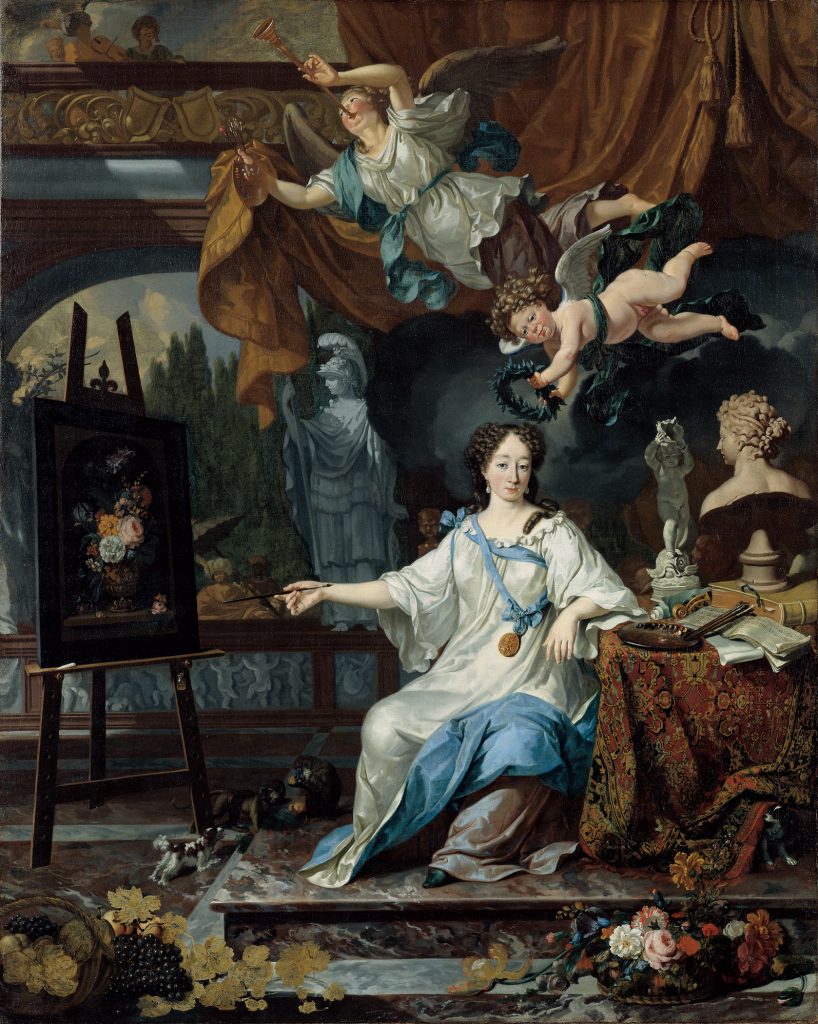Allegorical Portrait of an Artist in Her Studio (work of art)
Artwork Info
Key Ideas
- This oil painting is considered an allegory, which means it is designed to tell the viewer a story. An allegory is like a hidden meaning that the viewer can “decode” by looking at visual clues in the artwork.
- The painting depicts an artist at the peak of her artistic career. The symbols used in the painting indicate her status as a talented and famous artist.
- The portrait was created during the “Dutch Golden Age.” This was a time of great wealth and success for the people of the Netherlands.
- Mythological figures were often included in Dutch Golden Age paintings, to communicate a specific meaning. The statue of Minerva (the Roman goddess of wisdom and the arts) in the painting represents the importance of this artist.
Learn More
An allegory is a story, picture, or work of art that uses symbols to represent a hidden meaning. Allegorical paintings include figures that symbolize specific emotions or ideas. The subject of this painting is a female artist who is pointing toward her canvas with her paintbrush. The woman’s pose and clothing style provide clues about her status as a successful artist. She is surrounded by fruit and flowers (symbols of fertility, abundance, and beauty) and allegorical figures. The larger winged figure is playing a trumpet (symbolizing fame). The smaller winged figure (a cherub) is placing a wreath on the woman’s head (a symbol of victory). Different objects on the table represent the woman’s achievements as an artist. Symbols of the liberal arts include the artist’s palette and paintbrushes, sculptures, and an open music book.
This painting was created during the Dutch Golden Age. This was a period in the history of the Netherlands that lasted from about 1588 until 1672. It was a time of great wealth and success for the Dutch people. Dutch Golden Age paintings often included mythological figures as symbols to communicate specific meanings. The most important of these symbols in Allegorical Portrait of an Artist in Her Studio is the statue of Minerva, the Roman goddess of wisdom and the arts.
The woman depicted in the painting may have been a successful artist in real life, or she may be an allegorical figure who represents the art of painting. Her identity is unknown.
tags: meaning, work, symbolism, women, flowers, fruit, animals
Additional Resources
Resources for Teachers:
- Read the artist’s biography.
- Explore a classroom guide to Dutch Golden Age painting.
- Explore a similar painting that depicts a young woman playing a piano.
Resources for Students:
- Watch a video about the Dutch Golden Age.
- Read a short article to learn some facts about Dutch Golden Age painting.
- View a similar painting created during the Dutch Golden Age.

